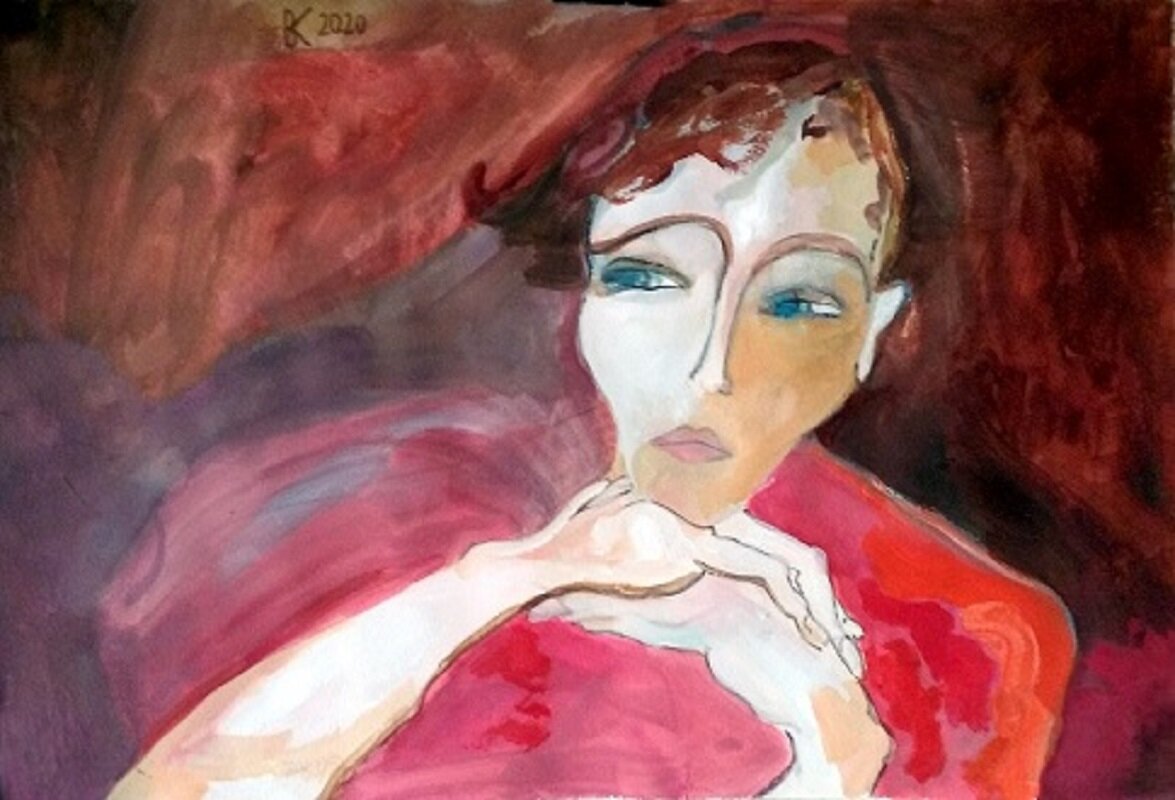Barbara Krajewska
France
http://bakrajewska.blog4ever.com
Barbara KRAJEWSKA was born in Poland but has lived in different countries. Profoundly European, she belongs to French culture that she represents with her books and other writings. Artist painter, she exhibited many times in Paris, but also in New York, in London, in Switzerland, in Italy and in Australia. She abandoned her initial technique, water painting, to work exclusively with oil on canvas. Barbara Krajewska is also an author. After completing her Ph.D. she published internationally four books and a number of articles devoted to French literature, French history, French society and also Napoleon and Dostoyevsky.
Initially indifferent to abstract, she has turned to this expression recently, although her favourite subjects are portraits, nudes and landscapes in an attempt to destabilise formal vision of world and people through a personal vision of things and human beings. She is trying to dramatise banal situations or to exaggerate what’s singular in settings that are eternal rather then anecdotal, all seised in a line deliberately minimalist. The purpose is to visualise certain states of mind without the ambition to venture into innovative or trendy approaches with the intention to express spleen or to retain the instant through aesthetical sublimation and the intensity of a suggestion.
Femme en rouge (woman in red)
1. What’s your background?
Barbara KRAJEWSKA was born in Poland but has lived in different countries. Profoundly European, she belongs to French culture that she represents with her books and other writings. Artist painter, she exhibited many times in Paris, but also in New York, in London, in Switzerland, in Italy and in Australia. She abandoned her initial technique, water painting, to work exclusively with oil on canvas. Barbara Krajewska is also an author. After completing her Ph.D. she published internationally four books and a number of articles devoted to French literature, French history, French society and also Napoleon and Dostoyevsky.
2. What does your work aim to say?
Initially indifferent to abstract, she has turned to this expression recently, although her favourite subjects are portraits, nudes and landscapes in an attempt to destabilise formal vision of world and people through a personal vision of things and human beings. She is trying to dramatise banal situations or to exaggerate what’s singular in settings that are eternal rather then anecdotal, all seised in a line deliberately minimalist. The purpose is to visualise certain states of mind without the ambition to venture into innovative or trendy approaches with the intention to express spleen or to retain the instant through aesthetical sublimation and the intensity of a suggestion.
3. How does your work comment on current social or political issues?
People, feelings, emotions and landscapes = eternal beauty and dilemmas
4. Who are your biggest influences?
Egon Shiele !
Mère et fils (mother and her son)
5. How has your art evolved over the years?
Please see above. I feel I try to catch the essential looking for minimalistic approach, the essence, the essence.
6. What does art mean to you?
Beauty and emotion, search for harmony.
7. What’s the most valuable piece of art to you?
Let me think, impossible answer as this changes depending on periods of life, state of mind, moment, but some paintings by Egon Schiele devastate me always and completely by their power
8. What’s next for you in the future?
New book published in France (the 5th) and always, always new paintings, looking forward to it. Exhibiting at Saint-Germain-des-Prés in Paris in October 2020 (Business Art).
Nu couché en mauve (nude in mauve)



